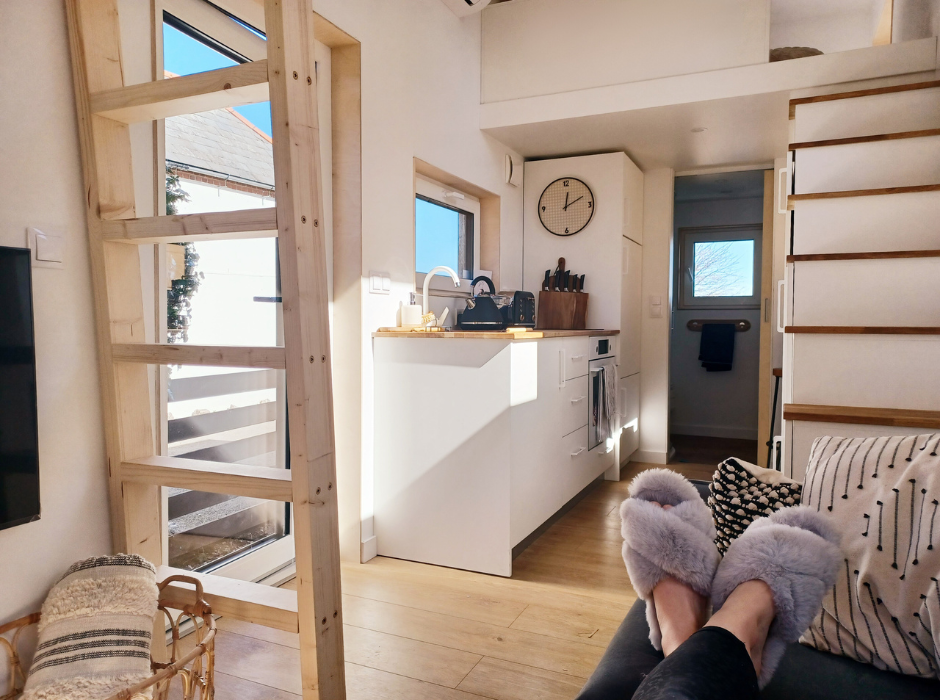Maximising Style in Small Spaces: Interior Design Tips for Tiny Homes
Living in a tiny home doesn’t mean you have to sacrifice style. In fact, limited space can inspire some of the most creative and functional interior design ideas. Whether you’re downsizing, building a minimalist life, or simply love the cosy charm of a small space, thoughtful design choices can transform your tiny house into a beautifully curated haven. In this article, we’ll explore how to maximize style in your small space through smart planning, design principles, and personality-packed details.
1. Start with a Clear Vision
Before purchasing furniture or choosing paint colours, define your design style. Are you drawn to the clean lines of Scandinavian interiors, the rustic warmth of farmhouse style, or the eclectic vibe of boho decor? Tiny homes benefit from cohesive themes—so once you choose your aesthetic, stick to it throughout the space.
Having a clear vision also helps you make intentional design decisions. In small spaces, everything must serve a purpose, and that includes your decorative choices.
2. Embrace Light and Neutral Colours
Colour plays a major role in how spacious a room feels. Light shades such as white, soft gray, pale beige, or pastel tones reflect natural light and open up the room visually. You don’t need to avoid color entirely—accents like navy, olive, or terracotta can add contrast and personality—but make light hues your foundation.
Paint walls, ceilings, and even floors in light colors to create an airy, expansive feeling. If your space lacks natural light, opt for warm LED bulbs to enhance brightness without harshness.
3. Use Multi-Functional Furniture
When every square foot counts, choosing furniture that works double duty is essential. Look for pieces that combine storage and function, like:
Ottomans with hidden compartments
Beds with built-in drawers
Convertible sofas
Wall-mounted desks that fold away
This approach reduces visual clutter and increases floor space, making your home feel bigger and more organised. Custom-built furniture is especially useful in tiny homes, as it allows you to use awkward or underutilised spaces more efficiently.
4. Create the Illusion of Space
Interior designers often use visual tricks to make a room feel larger. Some of the most effective include:
Mirrors: Reflect light and visually double your space. A large mirror opposite a window works especially well.
Vertical lines: Use vertical shelving, tall furniture, or striped wallpaper to draw the eye upward.
Low-profile furniture: Pieces with lower backs and slim legs give the illusion of more open space.
Incorporating these techniques into your layout can dramatically increase the perceived size of your tiny home.
5. Maximise Wall Space
When you can’t go wide, go vertical. Walls offer prime real estate for storage and decoration. Consider these smart wall solutions:
Floating shelves: Perfect for books, plants, or decorative objects.
Pegboards: Flexible storage options for kitchens or workshops.
Wall-mounted lighting: Free up floor and table space.
Wall décor also adds character to your tiny home. Whether it’s a statement mirror, a gallery wall, or a bold mural, adding visual interest to the walls elevates the entire space. To easily refresh your interior, you might explore options like custom wallpaper murals from Wallism, which allow you to personalize your home without overwhelming the limited space.
6. Go for Built-Ins and Custom Solutions
Standard furniture can be bulky or waste space in a small home. Built-ins, on the other hand, can be tailored to your needs and space dimensions. Think built-in banquettes, shelving units, or even Murphy beds that fold into the wall when not in use.
Custom carpentry can be a larger upfront investment, but it pays off in everyday functionality and a sleek, seamless look that enhances your interior style.
7. Keep It Clutter-Free
Clutter is the enemy of good design in any home—but in a tiny home, it’s a deal-breaker. Adopt a minimalist mindset when decorating and storing your belongings. Use baskets, bins, drawer organizers, and hidden compartments to keep everything tidy.
Apply the “one in, one out” rule: for every new item you bring into the home, remove one you no longer need. This habit helps keep your possessions intentional and your space livable.
8. Define Zones with Design
Even in a studio-style tiny home, it’s important to define different areas for living, sleeping, working, and eating. Use design elements like rugs, curtains, lighting, or different paint colors to visually separate zones without using walls.
For example, a rug under the bed can define the sleeping space, while pendant lighting over the table sets off your dining area. These subtle cues create structure and flow, helping your home feel more functional and less cramped.
9. Incorporate Nature and Texture
Natural elements and textures bring warmth and comfort to small interiors. Try adding:
Plants for fresh air and organic shapes
Natural wood finishes in furniture or shelving
Textiles like linen, wool, and cotton for softness
Rattan or jute baskets for texture and storage
These touches help soften modern or minimalist styles and create a homey, inviting atmosphere.
10. Personalize with Meaningful Details
Finally, don’t forget to make your space your own. In a tiny home, even the smallest decor choices matter. Curate your interior with things you love—whether it’s a collection of framed photos, a vintage vase, or a handmade quilt.
Because space is limited, every detail stands out more. Choose pieces that reflect your personality and bring joy. Design isn’t just about aesthetics; it’s about creating a space where you feel at home.
Final Thoughts
Interior design for tiny homes is all about balance—between function and beauty, minimalism and personality. With smart planning and thoughtful choices, you can transform even the smallest space into a stylish, welcoming retreat.
By focusing on light, multi-purpose furnishings, vertical space, and personalised details, you can maximise both style and comfort. Whether you’re living in a 200-square-foot cabin or a tiny urban apartment, these tips will help you make the most of every inch—beautifully.
If you’re looking for something bigger, why not check out our range of cabins too!


